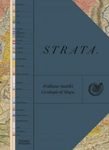About this book
Natural history collections have recently acquired an unprecedented place of importance in scientific research. Originally created in the context of systematics and taxonomy, they are now proving to be fundamental for answering various scientific and societal questions that are as significant as they are current.
Natural History Collections in the Science of the 21st Century presents a wide range of questions and answers raised by the study of collections. The billions of specimens that have been collected from all around the world over more than two centuries provide us with information that is vital in our quest for knowledge about the Earth, the universe, the diversity of life and the history of humankind.
These collections also provide valuable reference points from the past to help us understand the nature and dynamics of global change today. Their physical permanence is the best guarantee we have of a return to data and to information sources in the context of open science.
Contents
Foreword xvii / Bruno David
Acknowledgments xxi / Roseli Pellens
Chapter 1. Natural History Collections: An Essential Resource for Science in the 21st Century 1 / Roseli Pellens
Chapter 2. Natural History Collections: An Ancient Concept in a Present and Future Perspective 13 / Philippe Grandcolas
Chapter 3. Louis XIV’s Blue Gems: Exceptional Rediscoveries at the French National Museum of Natural History 27 / François Farges
Chapter 4. Rediscovering Human Mummies: Unpublished data on the Chachapoya Mummy Exhibited at the Musée de l’Homme 37 / Aline Thomas, Arnaud Ansart, Christophe Bou, Jean-Bernard Huchet, Véronique Laborde, Samuel Merigeaud and Éloïse Quetel
Chapter 5. Reconstructing the History of Human Populations: A Challenge for Biological Anthropology 63 / Martin Friess and Manon Galland
Chapter 6. The Discovery of New Metal-Hyperaccumulating Plant Species in Herbaria 79 / Vanessa R. Invernón, Romane Tisserand, Pierre Jouannais, Dulce M. Navarrete Gutiérrez, Serge Muller, Yohan Pillon, Guillaume Echevarria and Sylvain Merlot
Chapter 7. Fossil Crustaceans in the Light of New Technologies 95 / Sylvain Charbonnier and Marie-Béatrice Forel
Chapter 8. The “Cyanobacteria and Microalgae” Collection in the Time of “-omics” 109 / Sébastien Duperron, Charlotte Duval, Sahima Hamlaoui, Katia Comte, Claude Yéprémian and Cécile Bernard
Chapter 9. The Collection of Cryopreserved Cells and Tissues of Vertebrates: Methods and Application 125 / Michèle Gerbault-Seureau and Bernard Dutrillaux
Chapter 10. Herbaria, the Last Resort for Extinct Plant Species 139 / Serge Muller, Valérie Priolet, Éric Badel and Stéphane Buord
Chapter 11. Ocean Cores, Climate Archives 159 / Eva Moreno and Annachiara Bartolini
Chapter 12. Clarifying the Radiocarbon Calibration Curve for Ancient Egypt: The Wager of Herbaria 177 / Anita Quiles, Vanessa R. Invernón, Lucile Beck, Emmanuelle Delque-Kolic, Myriam Gaudeul, Serge Muller and Germinal Rouhan
Chapter 13. Herbaria, a Window into the Evolutionary History of Crop Pathogens 195 / Lionel Gagnevin, Adrien Rieux, Jean-Michel Lett, Philippe Roumagnac, Boris Szurek, Paola Campos, Claudia Baider, Myriam Gaudeul and Nathalie Becker
Chapter 14. The Yellow-Legged Asian Hornet: Prediction of the Risk of Invasion and the Study of its Color Variations 219 / Claire Villemant, Quentin Rome and Adrien Perrard
Chapter 15. Exploring Temporal Changes in the Composition of Macroalgal Communities by Using Collections 235 / Marine Robuchon, Éric Feunteun, Romain Julliard, Florence Rousseau and Line Le Gall
Chapter 16. Herbaria, Witnesses of the Stakes of Biodiversity Conservation and the Impacts of Global Changes 251 / Serge Muller, Vanessa R. Invernón and Germinal Rouhan
Chapter 17. Digital Photography In Natura in Zoology: More Biology in Natural History Collections? 271 / Romain Garrouste
Chapter 18. The Use of Large Natural History Datasets to Respond to Current Scientific and Societal Issues 289 / Anne-Christine Monnet, Thomas Haevermans, Anne-Sophie Archambeau, Philippe Grandcolas and Roseli Pellens
Chapter 19. Is There a Need for Biocultural Collections? State of the Art and Perspectives 311 / Serge Bahuchet
Chapter 20. Why Preserve? 337 / Véronique Rouchon
Chapter 21. Collections for Scientific Research in the 21st Century and Beyond 359 / Roseli Pellens
List of Authors 373
Index 381
Customer Reviews
Biography
Roseli Pellens is a researcher in macroecology and systematics for conservation at the Institute of Systematics, Evolution and Biodiversity, France. Her research interests include openness and sharing in science and the contribution of natural history collections as a sustainable source of data and inspiration.


































